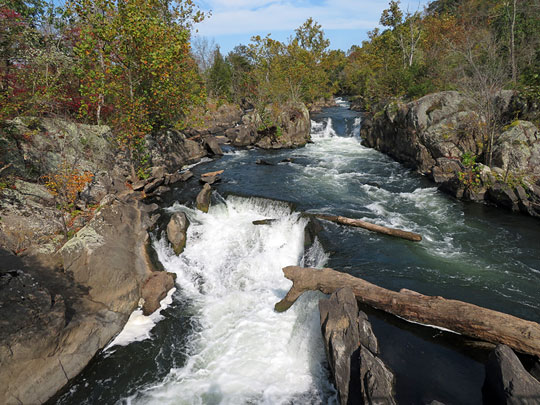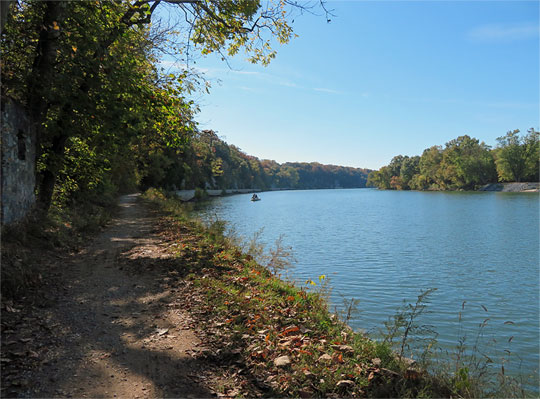Saturday, 17 October 2020
Little Orleans to Williamsport, 42 miles
The Western Maryland Railroad Trail closely parallels the C&O Canal and towpath for almost 30 miles between Little Orleans and Fort Frederick State Park. We chose to ride the paved asphalt rather than the towpath in this section. We missed a few sights along the river by doing this, but we also got great views of aqueducts from the WMRT.
 |
A beautiful, but cold, sunrise at the Town Hill Overlook. The Inn provided an unforgettable gourmet breakfast.
|
 |
We hadn't gone very far when we realized that Lon's front rack was no longer attached to his front fork on the right side. Duct tape works wonders -- and held until we got back home.
|
 |
The Western Maryland Railroad Trail is paved and usually about 20 feet above the canal and towpath.
|
 |
| Sideling Hill Creek Aqueduct |
 |
Licking Creek Aqueduct. In this area, I-70 parallels the WMRT for about 5 miles. In this stretch the (former) canal, (former) railroad, and the (modern) Interstate closely follow the north side of the Potomac, illustrating the change in transportation over the last 200 years.
|
 |
Fort Frederick State Park. Fort Frederick was built for the French and Indian Wars in 1756, and was crucial for protecting the canal in the Civil War.
|
 |
Restored barracks inside the fort. Visitors can only stand at the main gate to look into the fort.
|
 |
Dam 5. For a half-mile above the dam, canal traffic used the river rather than a canal. This was known as "Little Slackwater".
|
 |
Sue and the view downstream of Dam 5.
|
 |
Just above Williamsport is the Conococheague Creek Aqueduct.
|
 |
Lon on the Conococheague Creek Aqueduct.
|
 |
The Conococheague Aqueduct has been recently restored, and is the only aqueduct that currently holds water.
|





























































